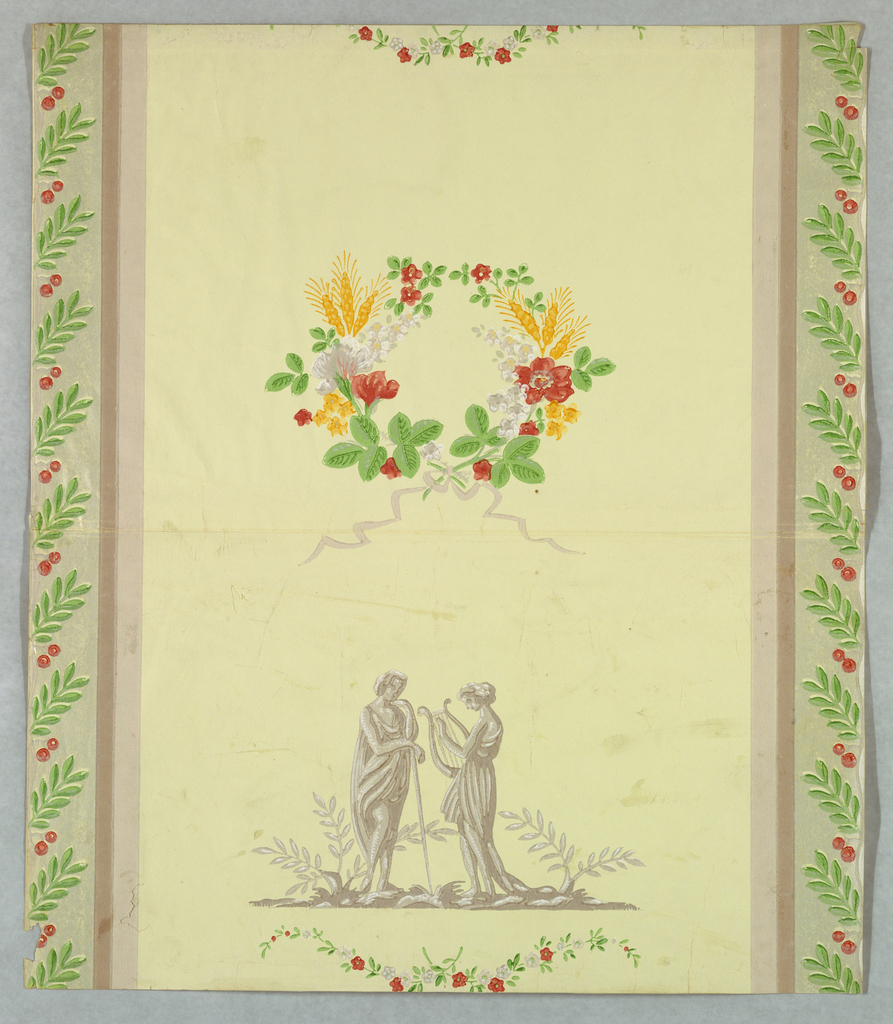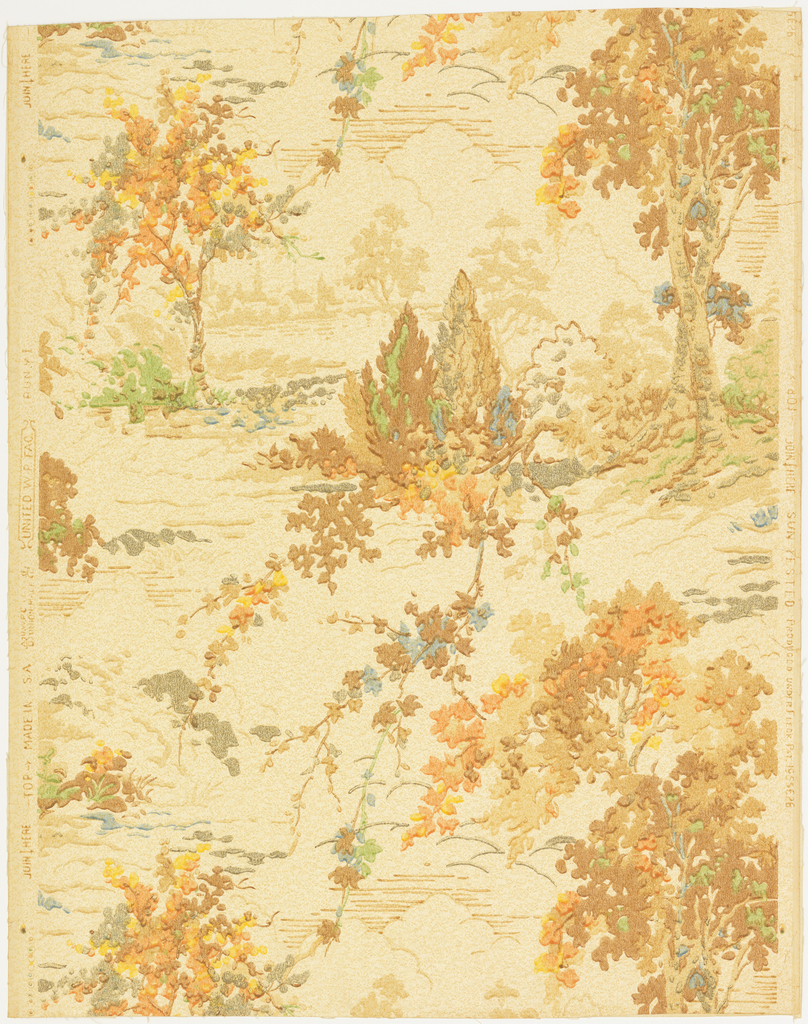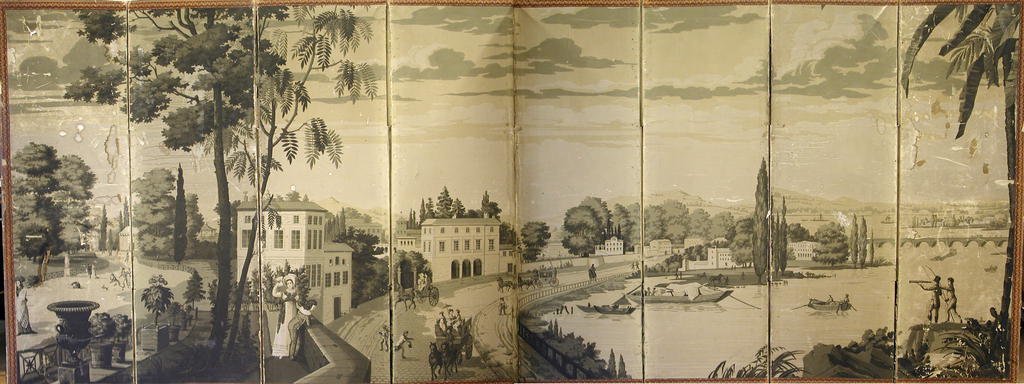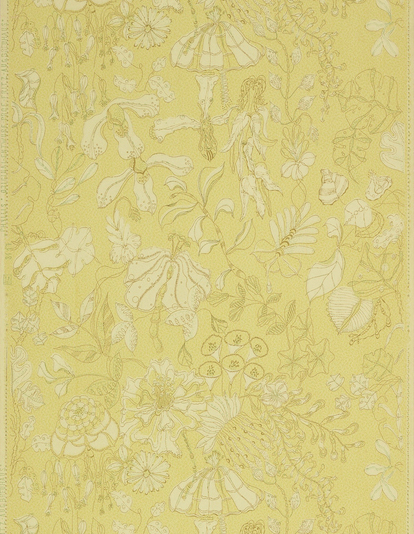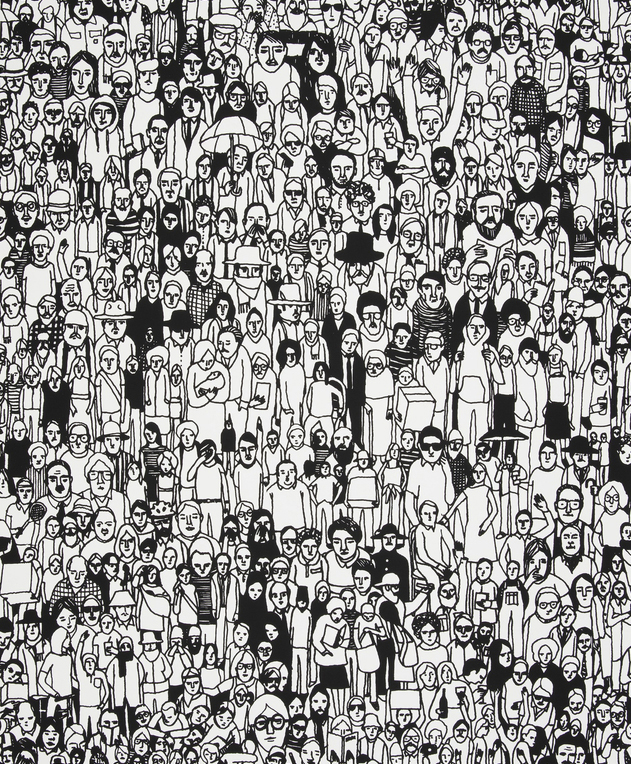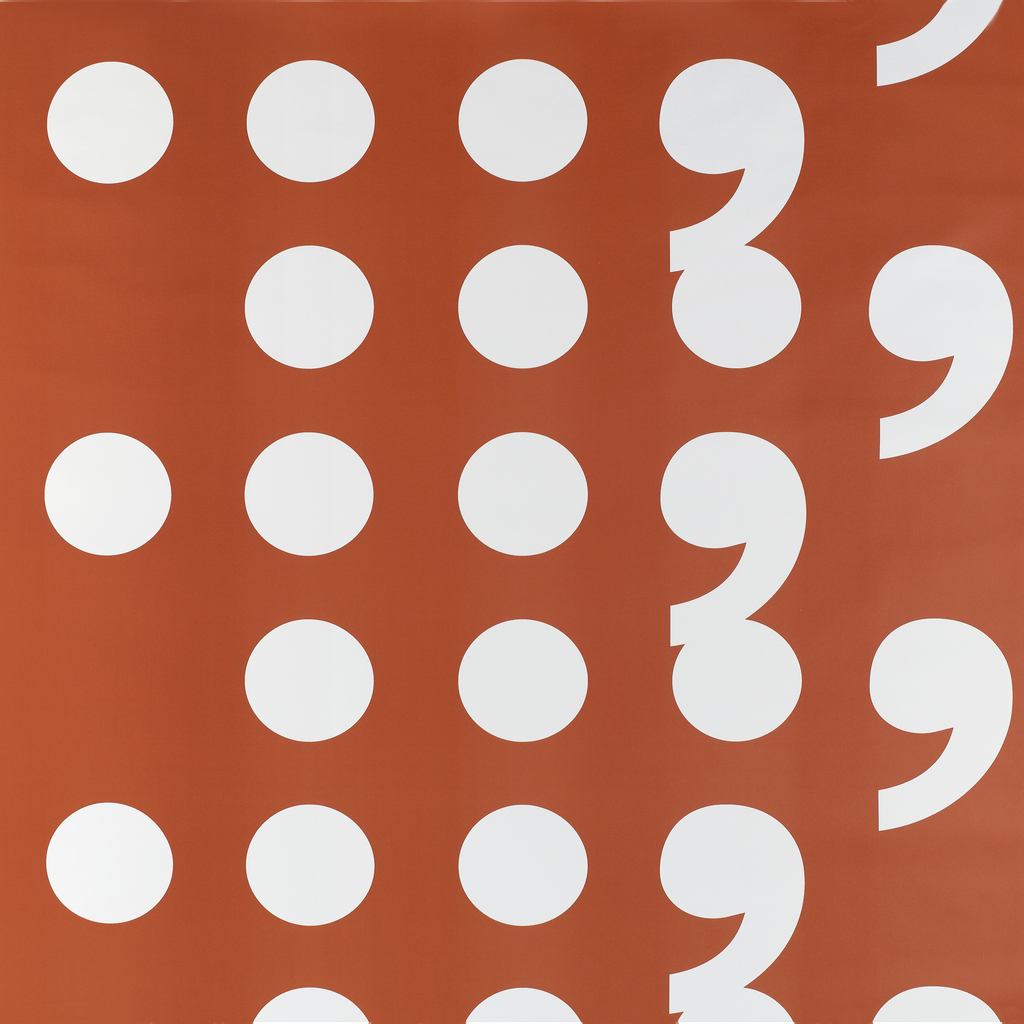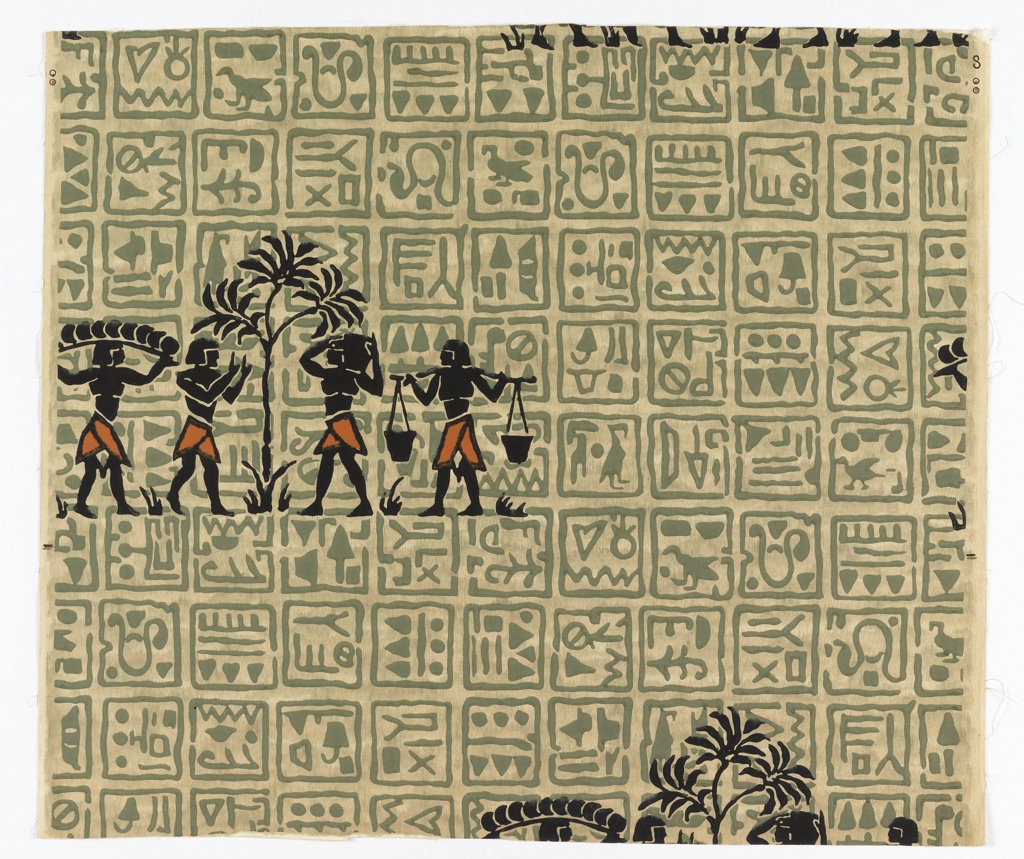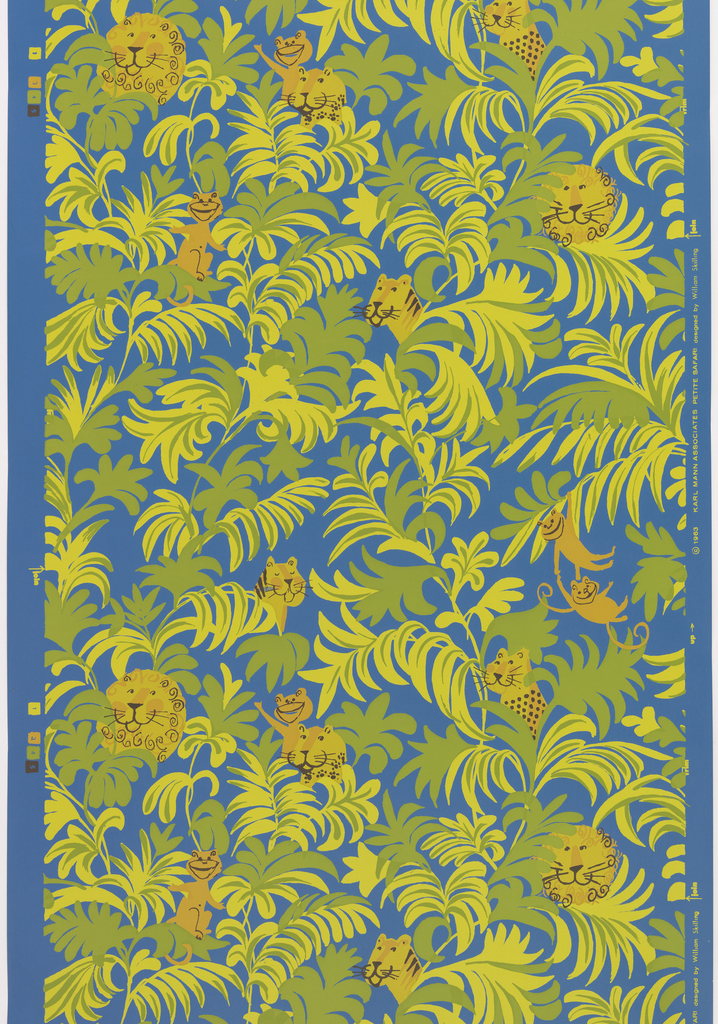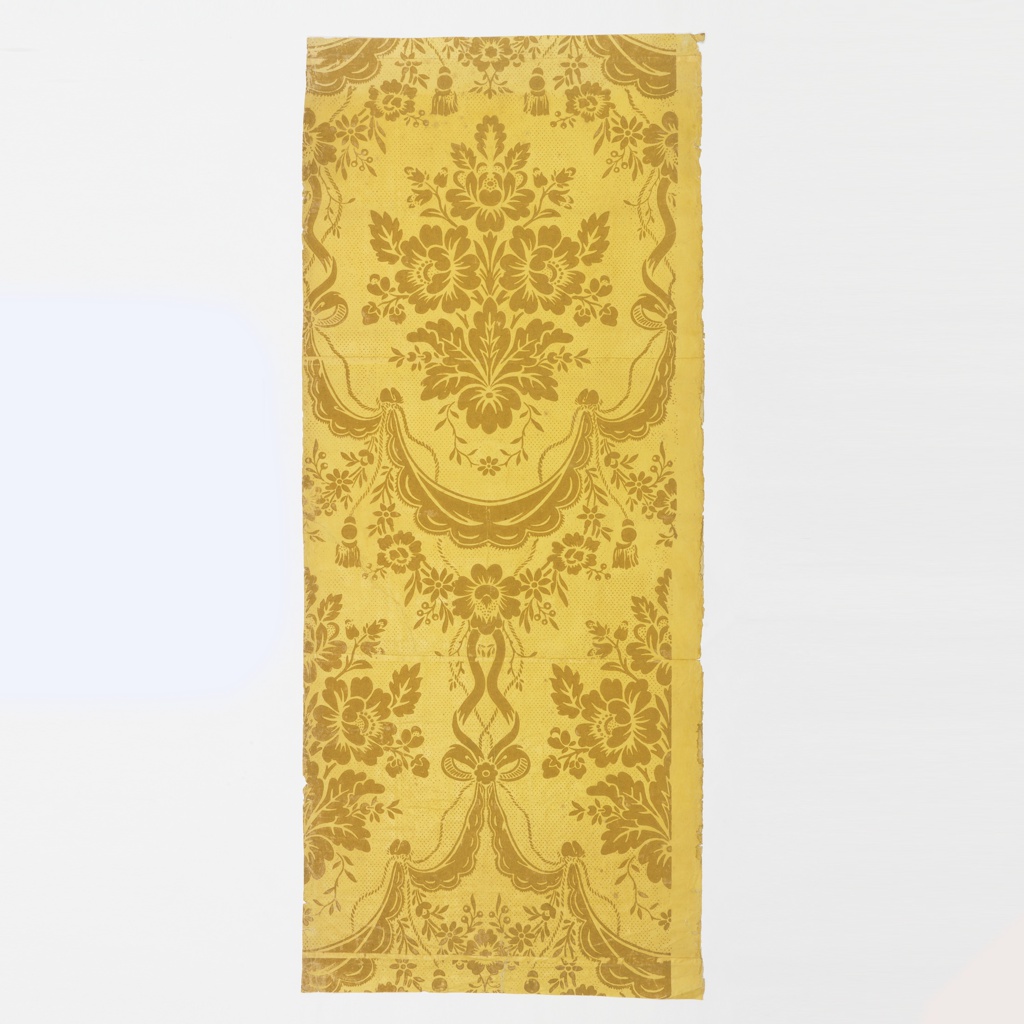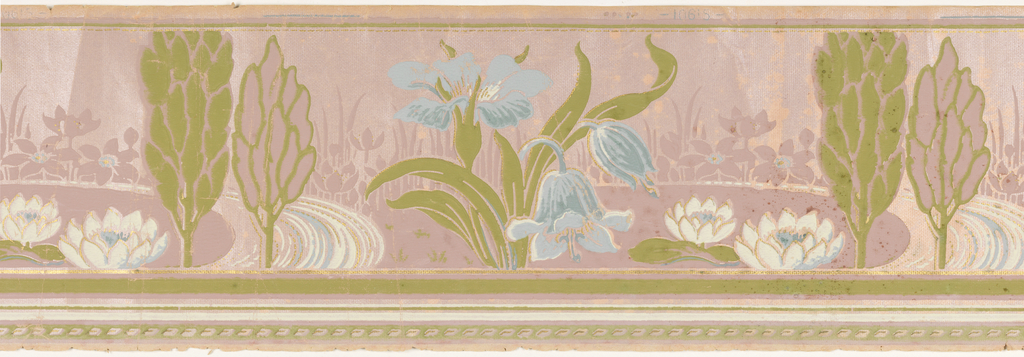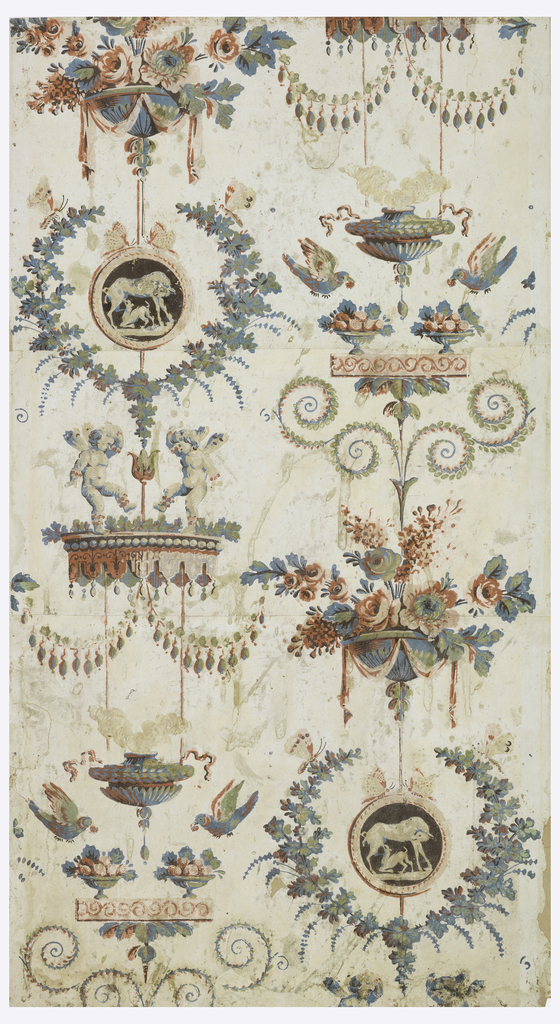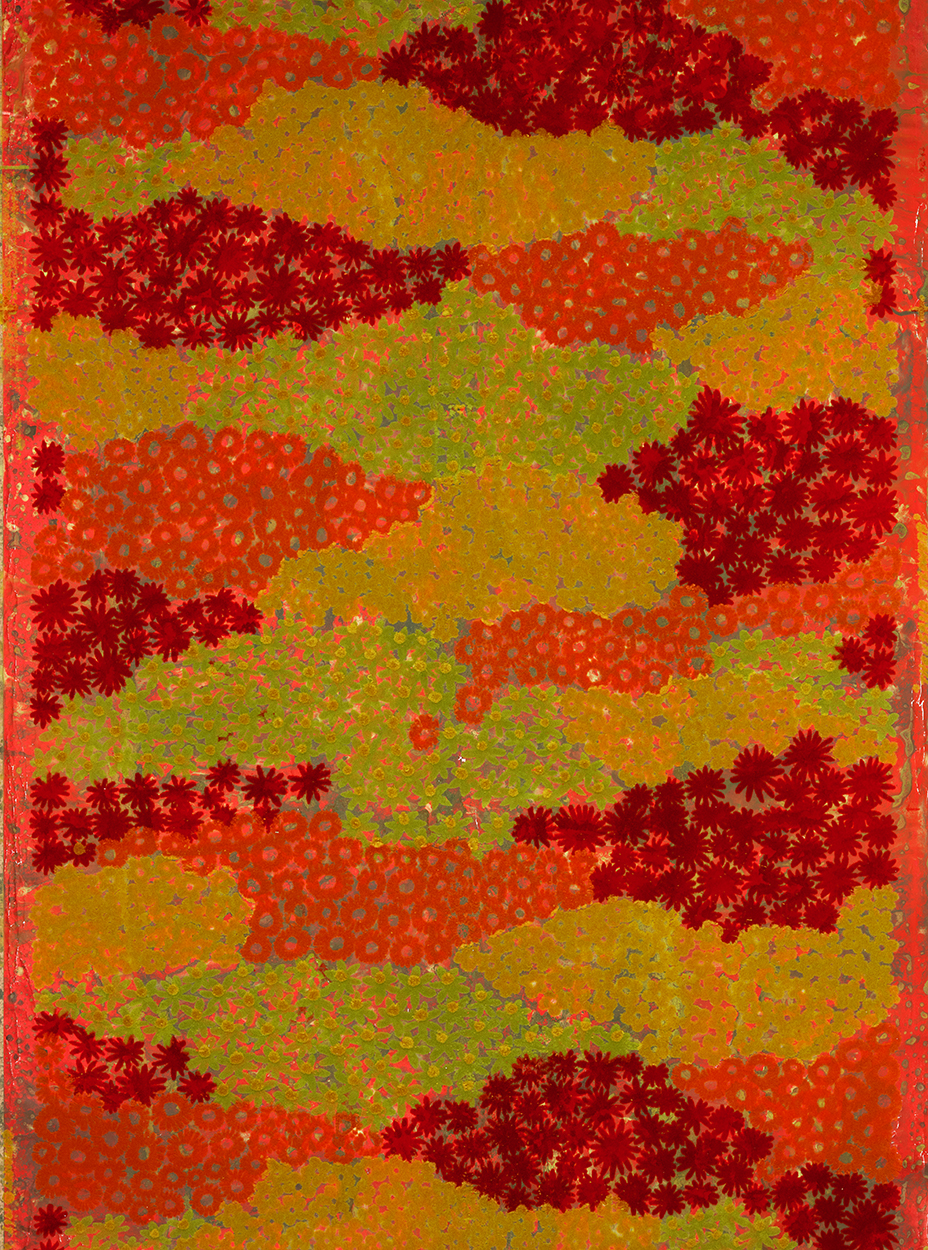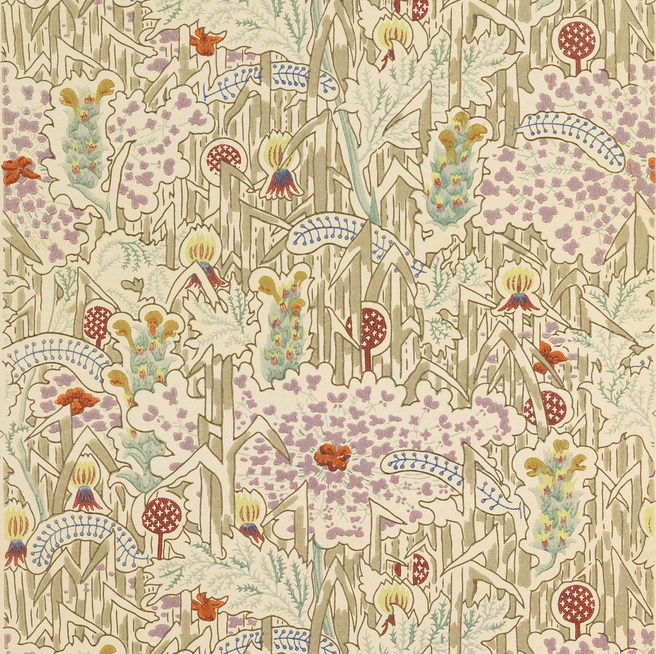This is a Colonial Revival wallpaper acquired during the tenure of the museum founders, Eleanor and Sarah Hewitt. This is a 20th century machine-printed reproduction of an early 19th century design. Given the contemporary date of this piece, and the crease across the middle of the paper, when received by the museum this sample was pasted into...
This post was originally published on March 5, 2016. Wallpaper can be used to create a very personal space, one reflecting the style and/or temperament of its creator, or possibly to inspire the desired mood. The myriad wallpapers in production at any given time range from ultra-minimal and loose, to dense pattern-rich designs. Peacock Garden,...
Walking through Central Park I enjoyed seeing all the brightly colored leaves in the trees, while the fallen leaves crunched underfoot. I thought this wallpaper with its warm colors and hints of green seemed to beautifully capture the essence of the fall day. This is a fairly stylized landscape scene which includes trees, vines, and...
One lesser known area of the Cooper Hewitt’s collection are folding screens covered with wallpaper. Many of these contain panels from scenic wallpapers mounted on the face of the screen. Today’s object is an eight-panel folding screen containing a scene called Environs de Paris from the scenic paper titled “Jardín Baujon beí Neuílly.” This is...
This is a modernist wallpaper from Germany, designed in the 1920s. It is printed in a more or less monochrome color palette which gives it a rather textural look. I was drawn to this design by the extravagant and very fluid design of the flowers which at first glance I thought were dancers in elaborate...
“All of Us” is a group of four different wallpapers that work together to show a gathering of people that starts out as a very dense configuration then transitions to become more sparse as the panels move to the right. The first panel contains a very dense grouping of people, all standing packed in like...
Today’s Object of the Day celebrates the winners of Cooper Hewitt’s National Design Awards. Honoring lasting achievement in American design, the Awards take place annually during National Design Week, with festivities for all ages celebrating design creativity and innovation. Pause is a strong graphic pattern using typographic characters that notify the reader to stop and...
When I’m scrolling through wallpaper images I frequently stop and wonder what movement or inspiration let to the fruition of that design. When I saw this Egyptian-style paper that the museum acquired in 1938 I couldn’t think of any events occurring at that time that may have inspired this. When I looked a little closer...
This is a delightful wallpaper designed for children. The design is rendered in a very flat perspective and illustrated in a naïve manner, which seems reminiscent of illustrations found in children’s books. A fun and whimsical paper that would allow children to create their own little safaris. The jungle scene contains images of lions, tigers,...
During the 17th century, France and England, both major producers and exporters of wallpapers, were printing inexpensive decorative patterns on single sheets of paper. These were multi-use papers and were used for lining trunks and chests, as well as decorating walls. Outlines were printed by crude wood blocks and color was added by applying thin...
“Fast and easy” is how this collection of borders was marketed to the public. Designed especially for the do-it-yourself market, these narrow borders were packed in individual boxes, sold in twelve foot lengths, and all were pre-pasted. They just had to be dipped in water and stuck on the wall, though consumers were advised to...
Most wallpapers designed with a water theme were intended for use in bathrooms, though given the early date of this Art nouveau border with its pond and water lilies it was possibly intended to partner with a similarly-styled wallpaper in a bedroom. Most wallpapers for the bathroom designed before 1910 appeared more hygienic due to...
The period from 1780-1820 produced some beautiful neoclassical wallpapers, of which the arabesque designs are a prime example. These wallpapers were inspired by the excavations of the ruins of Pompeii and Herculaneum which began in 1758. This wallpaper, which has seen better days, is an excellent example. On an arabesque design all of the elements...
Another floral design, but not “just another floral.” This wallpaper is truly a product of the late 1960s, printed in four deeply saturated colors of flock on a marbled Mylar foil ground. From a distance it takes on the appearance of clouds with their free-form, rather ambiguous shapes. But closer inspection reveals this is indeed...
This is a wallpaper by American watercolorist Charles Burchfield. It is quite a beautiful design with its mix of soft rounded forms and strong verticals, but seems to be one of his lesser known papers as I don’t see it getting published like two of his other designs, The Birches and Modernistic. It is a rather...
